While both versions follow the same core backup process, UpdraftPlus Premium offers extra features like scheduling incremental backups to save storage space and backing up before updates for extra protection.
Curious about what else UpdraftPlus Premium offers? Check out our detailed free vs premium UpdraftPlus comparison.
Now, let’s dive into the backup process.
How to back up with UpdraftPlus free
While it may not have the advanced features of the premium version, it’s still a very convenient and efficient way to start backing up your website. Everything you need to schedule backups and send them to cloud storage is here.
Step 1: Turn on reporting
To get started, navigate to Settings in your WordPress dashboard and select UpdraftPlus Backups. Then, go to the Settings tab within the plugin.


Step 2: Choose a backup location
If you still want to save backups to your server, you can still do that with UpdraftPlus. To save to a cloud backup location, go to the Settings tab.
Look for Choose your remote storage and tap the icon for the remote storage you want to use. Follow the relevant instructions to connect UpdraftPlus. For instance, if you’re using Dropbox, you’ll need to authenticate your Dropbox account, for FTP, enter your FTP credentials, and so forth. When you’re done, click Save Changes at the bottom.
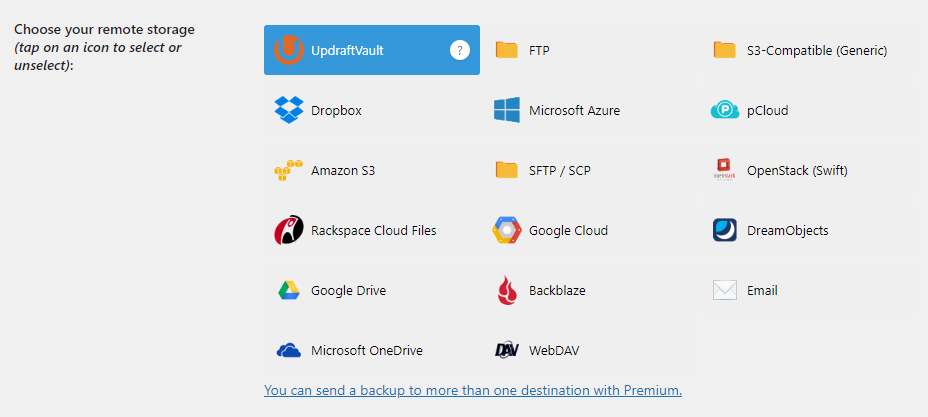
- UpdraftVault.
- Dropbox.
- Amazon S3.
- Rackspace Cloud Files.
- Google Drive.
- FTP.
- OpenStack (Swift).
- DreamObjects.
- S3-Compatible (DigitalOcean
- Spaces, Linode Object Storage, etc.).
- Email.
- UpdraftVault (1GB of integrated storage is included).
- Microsoft OneDrive.
- Microsoft Azure.
- SFTP/SCP.
- Google Cloud.
- Backblaze.
- WebDAV.
- pCloud.
Step 3: Schedule your backups
From the same Settings tab as before, look for Files backup schedule and Database backup schedule. You can back up the files and database at separate times, which is useful if you don’t want to use too many server resources all at once.

- Manual backups only.
- Every 2 hours.
- Every 4 hours.
- Every 8 hours.
- Every 12 hours.
- Daily.
- Weekly.
- Fortnightly.
- Monthly.
You can choose how many backups you retain with the free version. UpdraftPlus will delete excess backups so they don’t clutter your server or eat up your cloud storage.
You can also choose which files are included or excluded from backups. Scroll down to the Include in files backup section and untick anything you don’t want to include.
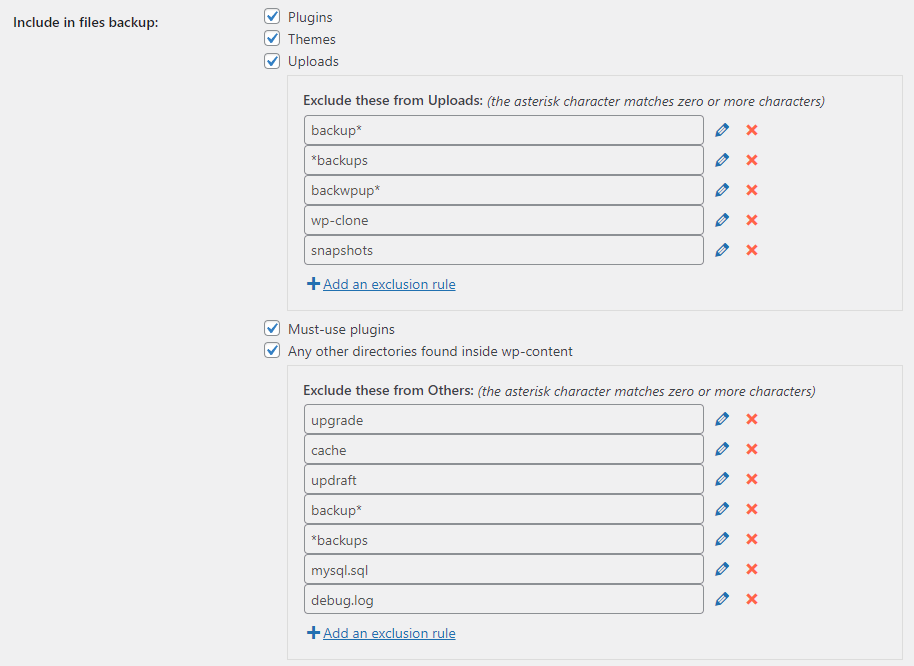
Step 4: Take a manual backup
To manually back up with UpdraftPlus, click the Backup / Restore tab. You’ll see a blue button that says Backup Now; click it.

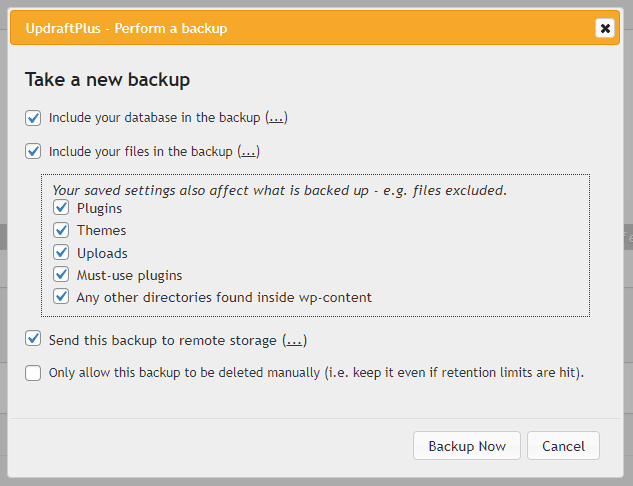
If you want to take incremental backups, you’ll need to upgrade to the premium version.
Step 5: Restore a backup
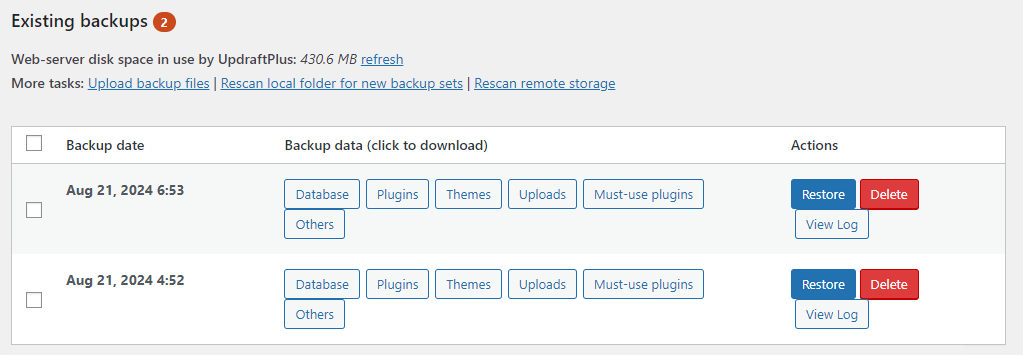
Once you click Restore, the restoration wizard will open. You can choose exactly which parts of your website to roll back.
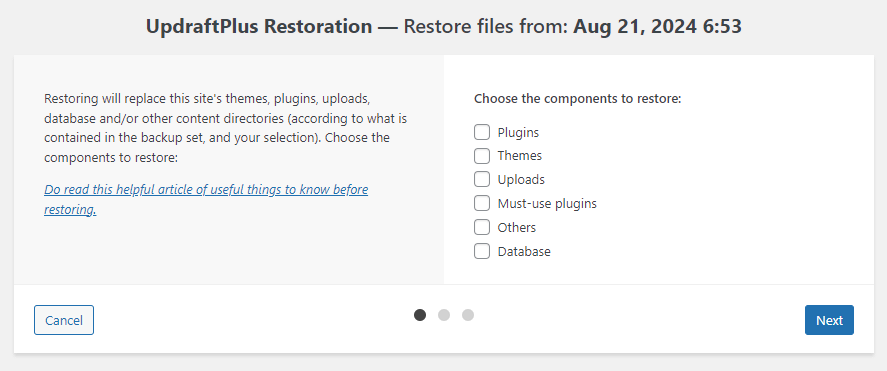
How to back up with UpdraftPlus Premium
Backing up with UpdraftPlus Premium is very similar to the free version, but there are a bunch of extra features you can take advantage of. If you don’t have it yet, you can purchase UpdraftPlus premium here.
Step 1: Turn on reporting
There’s a lot more information in the report compared to the free version. It will tell you exactly what was included in the backup, the backup size and where it was sent to. Reports even include cryptographic checksums so you can verify the integrity of backups.
Open UpdraftPlus, then click the Settings tab at the top.

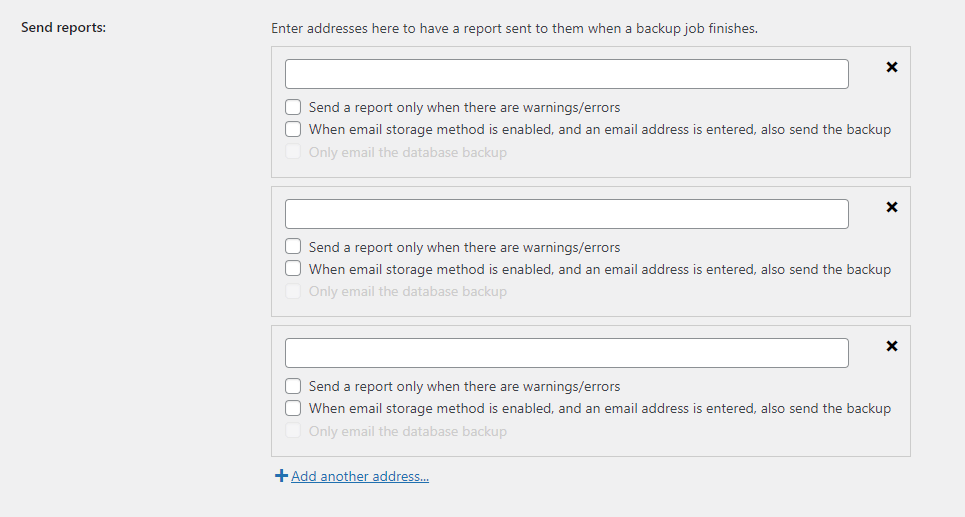
Step 2: Choose backup locations
In this same Settings tab, look for the Choose your remote storage option. You’ll see a list of the following options to choose from:
- UpdraftVault (1GB of free Vault storage included with Premium).
- Dropbox.
- Amazon S3.
- Rackspace Cloud Files.
- Google Drive.
- FTP.
- OpenStack (Swift).
- DreamObjects.
- S3-Compatible (DigitalOcean Spaces, Linode Object Storage, etc.).
- Email.
- Microsoft OneDrive.
- Microsoft Azure.
- SFTP/SCP.
- Google Cloud.
- Backblaze.
- WebDAV.
- pCloud.
Click on any number of storage options. Several tabs will appear below the remote storage menu, and you can click between them to authenticate each remote storage option.
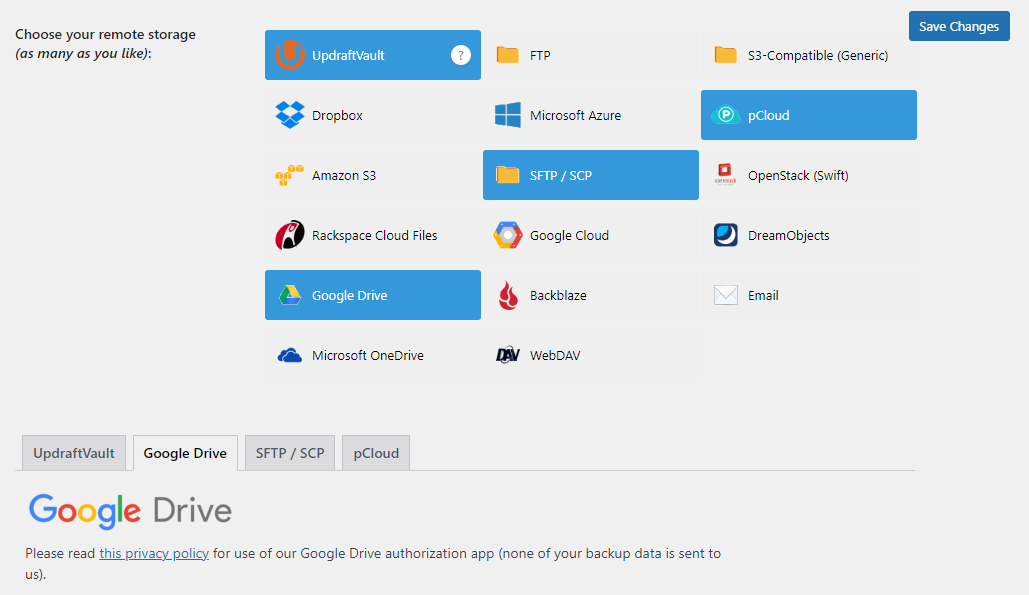
Step 3: Schedule your backups

- Every 2 hours.
- Every 4 hours.
- Every 8 hours.
- Every 12 hours.
- Daily.
- Weekly.
- Fortnightly.
- Monthly.
You can also tell UpdraftPlus to automatically delete backups once they reach a certain age, to save you from having to manually delete them.
Finally, you can also schedule incremental backups. Full backups can take up a lot of space. Incremental backups only back up files that have changed or been uploaded.
Make sure to click Save Changes when you’re done.
Step 4: Include or exclude files
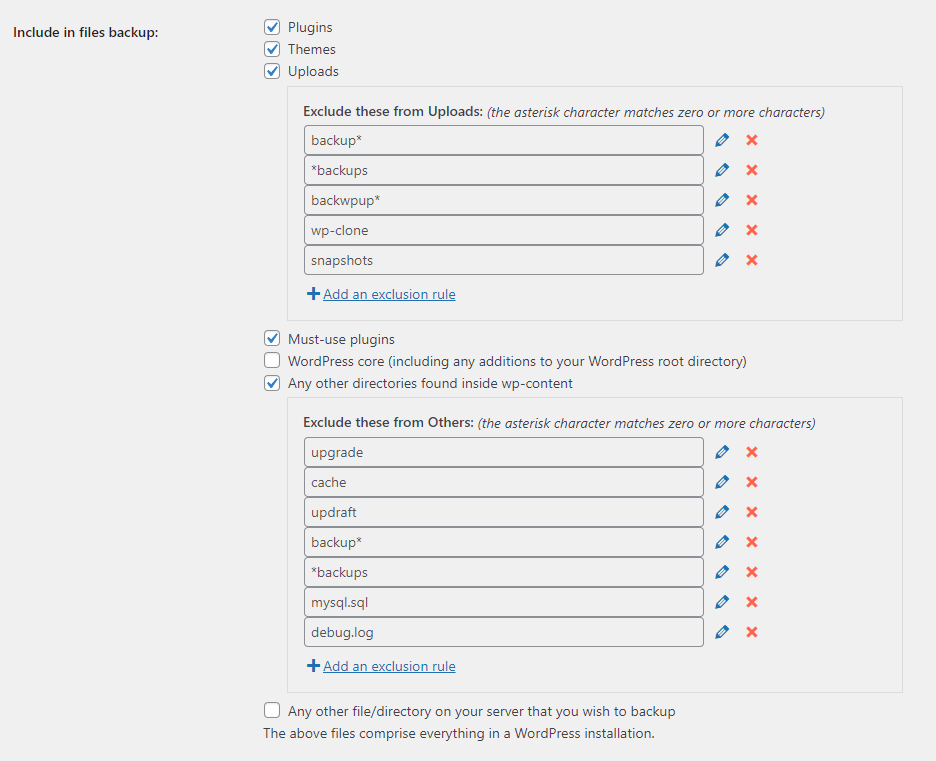
Click Save Changes when you’ve finished setting up your custom rules.
Step 5: Take a manual backup
On the Backup / Restore tab, click the blue Backup Now plugin.

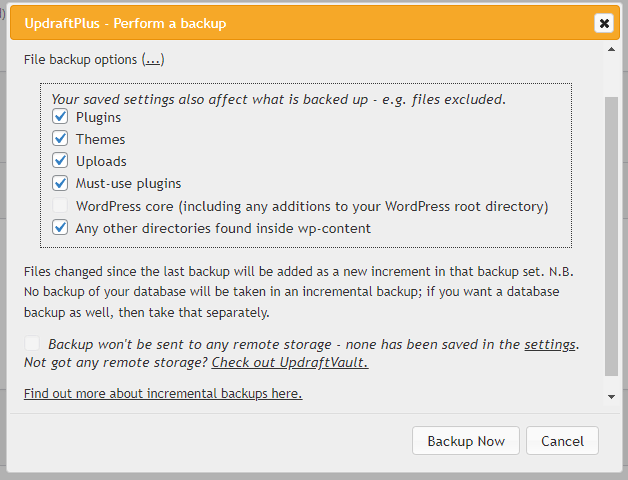
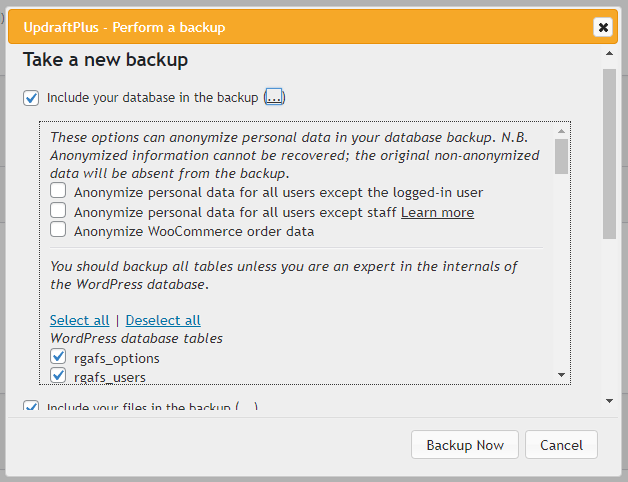
As a premium user, you can also take a manual backup of incremental changes made (instead of a full site backup) to save on file space. Below the Backup Now button, click Add changed files (incremental backup). A similar pop-up will appear, and you can again customise what is included.
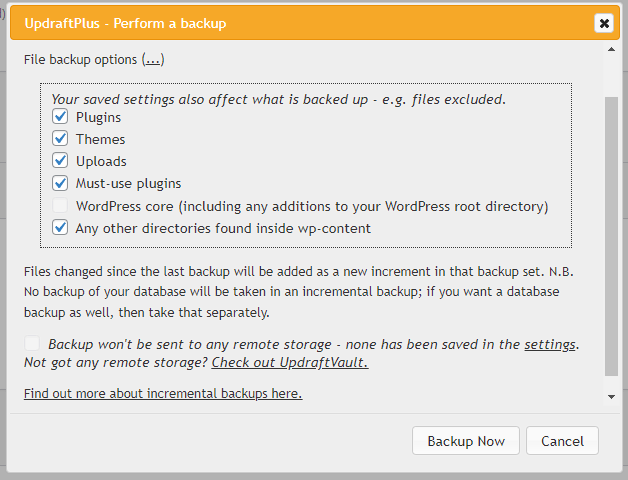
Step 6: Restore a backup
Click Restore on the backup you want to revert to. Alternatively, if you’ve downloaded a backup manually, you can click Upload backup files to restore the backup that way.
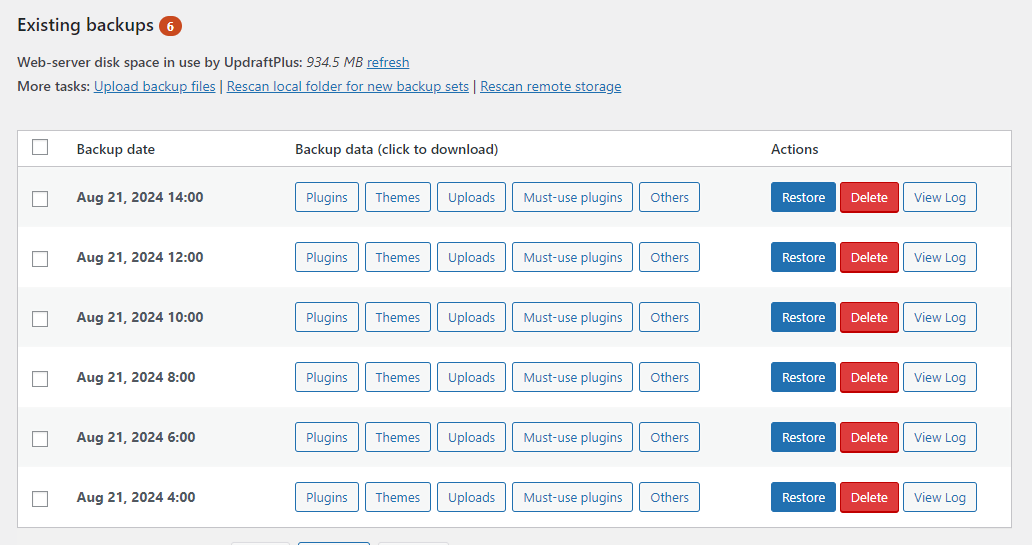
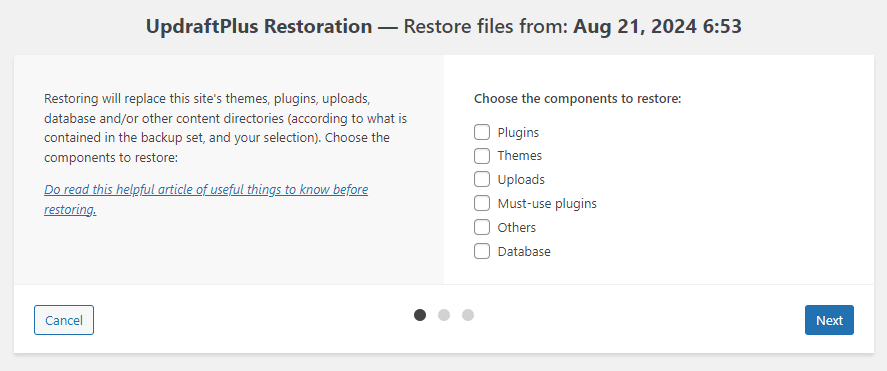
Conclusion
If you’re a free user intrigued by the premium features, consider purchasing UpdraftPlus Premium. Incremental backups, more remote storage locations and granular control over every setting are just some of what the premium version has to offer.